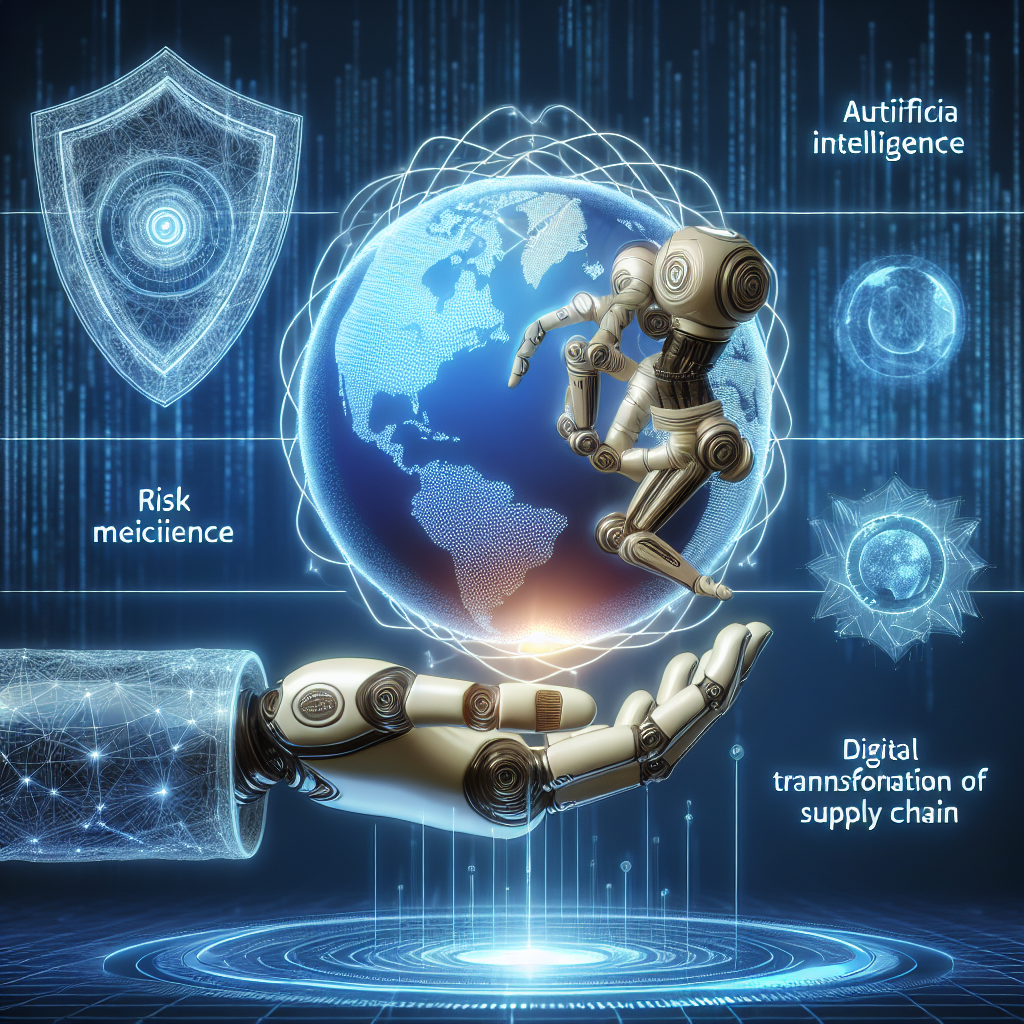In recent years, the global supply chain has faced unprecedented challenges, from natural disasters to political unrest to a global pandemic. These disruptions have highlighted the need for supply chain resilience and risk mitigation strategies to ensure the smooth flow of goods and services. One key tool in achieving this resilience is artificial intelligence (AI), which can help companies predict and respond to disruptions in real-time, optimize inventory levels, and enhance overall supply chain efficiency.
AI in Supply Chain Resilience
AI has the ability to analyze vast amounts of data from multiple sources and identify patterns and trends that humans may overlook. This capability is particularly valuable in supply chain management, where companies must juggle numerous variables, such as demand forecasting, inventory management, transportation logistics, and supplier relationships.
One way AI can enhance supply chain resilience is through predictive analytics. By analyzing historical data and external factors, AI can forecast supply chain disruptions before they occur, allowing companies to take proactive measures to mitigate their impact. For example, AI can predict when a supplier is likely to experience delays due to weather events or labor strikes, enabling companies to source alternative suppliers or adjust production schedules accordingly.
AI can also improve demand forecasting accuracy, helping companies optimize inventory levels and reduce the risk of stockouts or excess inventory. By analyzing historical sales data, market trends, and other relevant factors, AI can generate more accurate demand forecasts, enabling companies to better match supply with demand and minimize costly disruptions.
Furthermore, AI can enhance supply chain visibility by tracking goods in real-time as they move through the supply chain. By integrating data from sensors, RFID tags, and other sources, AI can provide companies with a comprehensive view of their supply chain, allowing them to quickly identify bottlenecks, inefficiencies, and potential disruptions.
Risk Mitigation
In addition to enhancing supply chain resilience, AI can also help companies identify and mitigate risks in their supply chain. By analyzing data from multiple sources, including social media, news reports, and financial data, AI can identify potential risks, such as supplier bankruptcies, geopolitical conflicts, or natural disasters, before they escalate.
For example, AI can monitor social media for signs of labor unrest at a supplier’s factory or track news reports of political instability in a key sourcing region. By identifying these risks early, companies can take proactive measures to mitigate their impact, such as diversifying their supplier base, increasing safety stock levels, or rerouting shipments to avoid affected areas.
Furthermore, AI can help companies assess the financial health of their suppliers and identify potential risks of bankruptcy or insolvency. By analyzing financial data, credit reports, and other relevant information, AI can flag suppliers that are at risk of default, allowing companies to take preemptive action, such as renegotiating payment terms or finding alternative suppliers.
FAQs
Q: How does AI improve demand forecasting accuracy in the supply chain?
A: AI can improve demand forecasting accuracy by analyzing historical sales data, market trends, and other relevant factors to generate more accurate forecasts. By identifying patterns and trends that humans may overlook, AI can help companies better match supply with demand and reduce the risk of stockouts or excess inventory.
Q: How can AI help companies mitigate risks in their supply chain?
A: AI can help companies mitigate risks in their supply chain by analyzing data from multiple sources, such as social media, news reports, and financial data, to identify potential risks, such as supplier bankruptcies, geopolitical conflicts, or natural disasters, before they escalate. By identifying these risks early, companies can take proactive measures to mitigate their impact, such as diversifying their supplier base or increasing safety stock levels.
Q: What are some examples of AI applications in supply chain resilience?
A: Some examples of AI applications in supply chain resilience include predictive analytics, which can forecast supply chain disruptions before they occur, and real-time tracking, which can provide companies with visibility into their supply chain and help them quickly identify bottlenecks or inefficiencies. AI can also help companies optimize inventory levels, improve demand forecasting accuracy, and assess the financial health of their suppliers.
In conclusion, AI plays a crucial role in enhancing supply chain resilience and mitigating risks in today’s complex and interconnected global supply chain. By leveraging AI technologies, companies can better predict and respond to disruptions, optimize inventory levels, and improve overall supply chain efficiency. With the increasing volatility and uncertainty in the global marketplace, AI will continue to play a key role in helping companies navigate these challenges and build more resilient and agile supply chains.

